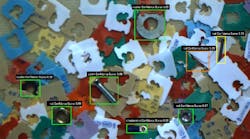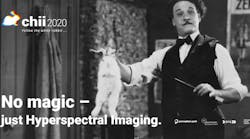Over the past twenty years, I have had the pleasure on interviewing numerous developers that have designed machine vision and image processing systems. After having installed such systems, many companies tout the labor savings, the high-throughput and increased accuracy that these systems have over manual inspection methods. Some even like to claim that their systems are 100% accurate. In practice, however, the precision and repeatability that even the most highly sophisticated systems have always exhibit less than 100% accuracy, although many Six-Sigma systems can approach such values.
When inspecting a mechanical part for defects, for example, the dimensions of a known good perfect part can be specified and then measured within statistically acceptable deviations. However, when inspecting products that are not easily described, machine vision inspection becomes a more intractable task. Vegetables and fruit, for example, may be easily described in terms of their weight, size and color, but the external and internal defects that they may exhibit may be immensely varied, making the task of programming a conventional machine vision system to take account of every defect difficult and time consuming.
To overcome this problem, many systems developers are looking to more unconventional methods that use sophisticated image classifiers such as neural networks and support vector machines (SVMs). After employing conventional image processing algorithms to extract numerous features of objects, the system is then presented with often hundreds of different types of objects of different parameters, all which may exhibit numerous types of defects.
After these are presented to the vision system, a human operator then trains the system as to which objects are acceptable. In such supervised machine learning systems, neural networks and SVMs can then be used to classify sort the products. Because such classifiers provide a graded value based on a combination of measured data and takes into account the relationship between the different measured values, they can be more accurate than systems that discriminate products based on single values alone.
Needless to say, training such systems can be both labor intensive and time consuming. However, once trained, they can provide an acceptably accurate means of classification. While manufacturers of fruit and vegetable sorting have used such systems effectively, other types of systems may be able to benefit from databases of pre-classified image data. Large numbers of radiological databases, for example, are already available that include case reports for medical teaching purposes. By using these images and their associated diagnostic reports, medical imaging systems can perform computer-aided diagnosis supporting physicians in making more accurate diagnoses.
[email protected]







